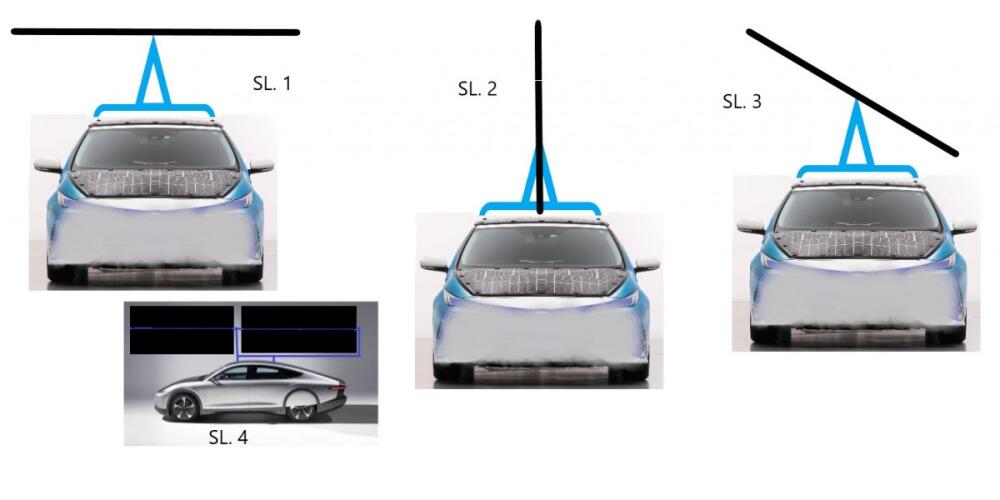
Many innovators have been trying to make a car powered by photocells glued to the roof of a car. The problem is low power, and therefore low speed. For this car to be usable, photocells must first recharge their batteries in the parking lot, and then go on their way.
In recent years, new electric cars powered by large, rechargeable batteries have been developed in several places. They have a short driving range because of the limited battery capacity.
Toyota is testing a new type of solar cell, developed jointly with partners Sharp and Japan's national research organization NEDO. These new photocells have an efficiency of 34% (unlike the previous 22%), and they have been installed on the car powered by these photocells. Photocells charge the battery both while driving and while standing in the practice area. This makes the range and speed of such a car significantly increased.
The Dutch startup Lightyear One is working on a similar project, which by 2021 intends to launch its model.
These new generations of thinner and more efficient photo cells could play a much larger role in the car startup in the future. With the development of multilayered photocells using different light frequencies, the efficiency of photocells will continue to increase.
Electric car owners could significantly increase the reach of their vehicles by installing photo cells like this. And mechanical efficiency can further increase efficiency.
Instead of gluing photocells to the roof, hood and rear window, the photocell mount could be affixed to the roof rack of the car. This type of bracket can be fitted to any car. Two triangular elevations should be placed on the bracket, with a shaft mounted on top. On this axis, which extends from the front end of the car to the rear end, there are photo cells. The shaft can be rotated by a small servomotor to position the photocells in the most favorable position relative to the sun.
In the morning and in the evening, and when the car is traveling east-west, the photocells should be placed perpendicular to the roof of the car: Fig. 2.
When the sun is at its highest position, or when the car is driving towards the sun, or from the sun, the photocells should be placed horizontally above the roof, Fig. 1. In this position, photocells would have an additional function, which is to protect the driver from the sun striking the eyes. In this position, photocells would also protect the windshield from falling rain or snow while driving the car solely on batteries.
When the sun is in an oblique position the photocell should also be skewed towards the sun, Fig.3.
Photo cell placement would be managed with a small servomotor operated by a small computer. If necessary, the driver should also have control, so that, for example, when entering the garage, he can place the photocells in the position in Figs. 1.
Photocells would give very little resistance when passing through the air because the shaft was positioned in the direction of travel. Only strong crosswinds could badly affect the stability of the vehicle while the photocells are in the Sl position. 2 and FIG. 4. Therefore, in the case of strong crosswind, the photocells should be positioned in Figs. 1.
The advantages of this solution of placing photocells on the roof rack of an electric car are multiple.
The roof rack can be mounted or removed, and so can the photocells.
The width of the photocells can be ten percent wider than the vehicle itself, and the length can be ten percent longer than the vehicle itself. As a result, the total surface area of the photocell can be much larger than when the photocell is glued to the vehicle body.
Placing photocells in a position perpendicular to the sun can be obtained several times more energy, both while driving and while the vehicle is parked.
Thanks to these improvements, the electric car would have a much longer range and could also be used where there are no electric car charging stations.
Other of my technical analyzes and innovations can be found in this book.
Tags
Featured articles